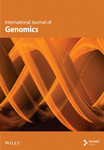Frequent genic rearrangements in two regions of grass genomes identified by comparative sequence analysis
Grass genomes show extensive colinearity based on comparative genetic maps, although some large chromosomal rearrangements mark particular lineages. Small rearrangements involving one or a few genes would be missed by these comparative maps. Hence, we have undertaken sequence comparisons between BACs (bacterial artificial chromosomes) that contain 80–200 kb genomic segments of several grass species.
Rp1 is a complex disease resistance locus in maize that provides race-specific resistance to the leaf rust disease caused by the fungus Puccinia sorghi. Sequence analysis of maize and sorghum Rp1 BACs revealed two Rp1 homologues and twelve other gene-homologous sequences, of which at least ten genes were truncated in one maize segment and eight gene-homologous segments were found in a second maize segment, of which two were Rp1-related and the other six were truncated. The truncated gene segments may have arisen by break repair, probably through homologous or illegitimate recombination. A 43 kb region with an Rp1 homologue, six truncated genes and three Opie retrotransposons was duplicated on two maize BACs. Estimation of divergence times for the Rp1 homologues, the three Opie elements and the intervening regions between duplicated regions are consistent with the duplication having occurred within the last 200 000 years. The Retrotransposons Opie-B, Opie-C and Opie-D were inserted before this duplication. In sorghum, the sequenced region includes a cluster of five Rp1 homologues, of which two are truncated with N-terminal deletions. Of the other three Rp1 homologues, a stop codon is present in one and a retrotransposon is inserted in another. The Rp1-homologous region in sorghum has several genes that are either duplicated, inverted, or both. Five duplicated genes other than the Rp1 homologues are present. Physical mapping revealed the presence of eleven Rp1 homologues that mapped to about 400 kb in B73 maize. Six Rp1 homologues mapped to about 50 kb in sorghum inbred BTx623 to a region on linkage group H that is colinear with maize chromosome 10.
The Waxy1 gene encodes UDP-glucose starch glycosyl transferase, an enzyme that converts amylose to amylopectin. Wx1 is in syntenic locations in all of these grass species, although maize Wx1 is within a paracentric inversion that places it near centromeric heterochromatin. Sequence analysis of BACs containing homologous wx1 genomic regions in six grasses (barley, maize, pearl millet, rice, sorghum, and diploid wheat) revealed several rearrangements of gene content, order and/or orientation. Some of the rearrangements appear to mark specific lineages. A cluster of five genes that are 5′ to the Wx1 loci are in the same relative order in the lineage that gave rise to maize, sorghum and pearl millet, but are in an inverted orientation in rice. None of the genes around the Wx1 homologues in barley or wheat are homologues of any of the genes in the other four grass species studied.
Compared to other regions that we, and others, have studied, the Wx1 and Rp1 orthologous segments appear to be more highly rearranged. Studies of such rapidly evolving regions provide novel insights into the numerous mechanisms that create genomic diversity.
Acknowledgements
This work was supported by the NSF Plant Genome Program (grants no. 9975618 and 9975793).




